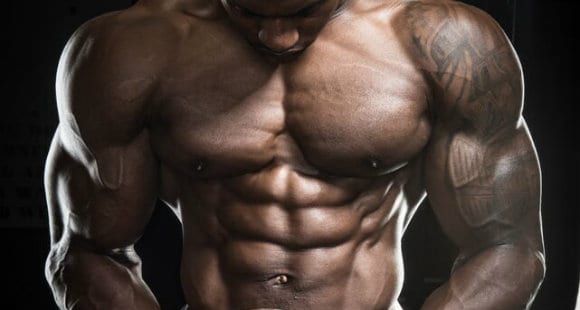The internal oblique muscle of the abdomen is part of that group of muscles that make up the abdominal wall and which together with the posterior muscles form the so-called core.
Anatomical-Functional Notes
Making a brief outline of anatomy, the muscle in question is located below the external oblique and above the transverse abdominal muscle; it originates from the anterior superior iliac spine, from the iliac crest and from the thoracolumbar belt (posteriorly) reaching, with an oblique trend and opening up like a fan, to the cartilages of the last three or four ribs (depending on the author), where it is inserted. From the medial portion of the muscle depart two aponeurotic sheets, two fibrous sheets, which surround the rectus muscle of the ipsilateral abdomen and join with the sheet coming from the muscle of the opposite side to contribute to the formation, in the center, of the Alba line. The lower portion of the muscle, with its extension, forms the cremaster muscle in humans, muscle that wraps around the testicle; in fact, a contraction of the muscle of the same name causes a slight ascent of the organ inside the sac.
Given its particular fan shape and the insertions on the ribs and bones of the pelvis, the internal oblique muscle performs different actions, depending on the fixed point and depending on the synergy with the other muscles; it is used in the flexion of the bust together with all the other muscles of the chest wall, therefore both external oblique and rectus abdominis on the same side and in collaboration with the homonymous muscles on the opposite side; in synergy with the square of the loins and the external oblique of the same side in lateral flexion; in synergy with the external lateral oblique of the opposite side in the rotation of the torso; its contraction also allows to increase the pressure in the abdominal area, allowing to withstand the forces acting on the spine during certain exercises; moreover, it carries out an action of lowering the ribs during forced exhalation, therefore to allow you to exert greater pressure on the lungs and ensure more effective breathing during physical efforts.

Working on this muscle has almost no aesthetic impact, that is, being a deep muscle, located below the external oblique, it is not visible, but its reinforcement is important in order to give greater tone and strength to the abdominal wall and therefore to carry out certain exercises with greater safety and guarantee a good posture. In bodybuilding they are trained to keep a small waist and bring out the V shape that starts from the upper portion of the torso. In combat sports, their continuous training is functional not only to increase the speed of flexion and rotation of the torso but also to further cushion the blows inflicted in those areas and protect the organs.
The Best Exercises
The best known and most effective exercises in internal oblique training involve both rotations, lateral pushups and full torso pushups, so we can both focus almost exclusively on the oblique and carry out a more generalized workout.
Now let's see some specific exercises that we are going to divide both by type (lateral or general flexion of the bust) and by increasing difficulty.
- Side deck: start by lying on one side with the body extended and the torso raised, resting the elbow and forearm on the ground. As you exhale, raise your pelvis while remaining with only the support of your feet and forearm. The position should be maintained for about 30-45 seconds / side with fluid and constant breathing. The exercise also involves the quadrice of the loins and the rectus abdominis. This exercise mostly involves the lumbar muscles.
- Crunch sideways: lying down, with the knees bent, cross one foot on the opposite knee (for example left foot on right knee). From this position, with the hands behind the neck, we try to bring the left shoulder towards the opposite knee. In this type of rotation with torso flexion, not only the internal obliques contralateral to the movement are involved but also the external ipsilateral obliques. Repeat the exercise on the opposite side as well, making 2 or 3 sets of 15-20 repetitions per side.

- In combat sports, as mentioned, a strong abdomen is essential and the most popular exercises are Jack knife su swiss-ball or in suspension to the Trx and the Woodchopper (which simulates the movement of the splitter with the ax): the first and the second are variants of the same exercise; with the feet on the swiss-ball and the hands on the ground, bend the knees, trying to bring them down without arching the lumbar and maintaining a good tone in the abdominal level; the same is true for the Trx exercise but the difficulty is increased by the suspension of the feet: in this variant it is also possible to perform a rotation together with the flexion; from this position, inhaling, you return to the starting point. Repeat 2-3 times with 10-15 repetitions.
- Woodchopper: the exercise can be performed either with cables (high or low position) in the classic variant or with equipment such as kettlebell, dumbbell or medicine ball. At the cable, your arms must be fully extended and both hands must grasp the handle. The movement must be carried out entirely from the torso, without bending the arms. If we use the high cable, we must go down and rotate the torso bringing the handle down and to the opposite side; vice versa if we use the pulley in the low position, the movement must be carried out in the opposite direction. When rotating the torso from top to bottom and to the left we are concentrating the work on the left internal oblique and right external oblique (together with the rectus abdominis), vice versa for the rotation on the opposite side.
Conclusions on the internal obliques
The internal obliques are therefore a muscle that can actually be trained but always remember that the innervation and activation of the abdominal muscles is unique. The development of this district is therefore consequential to a development of the core as a whole and must be understood as such. The proposed exercises are absolutely useful and functional as they give different stimuli but, our suggestion, is still that to vary the work especially in order not to tire too much the motor schemes that involve a torsion of the torso.


























